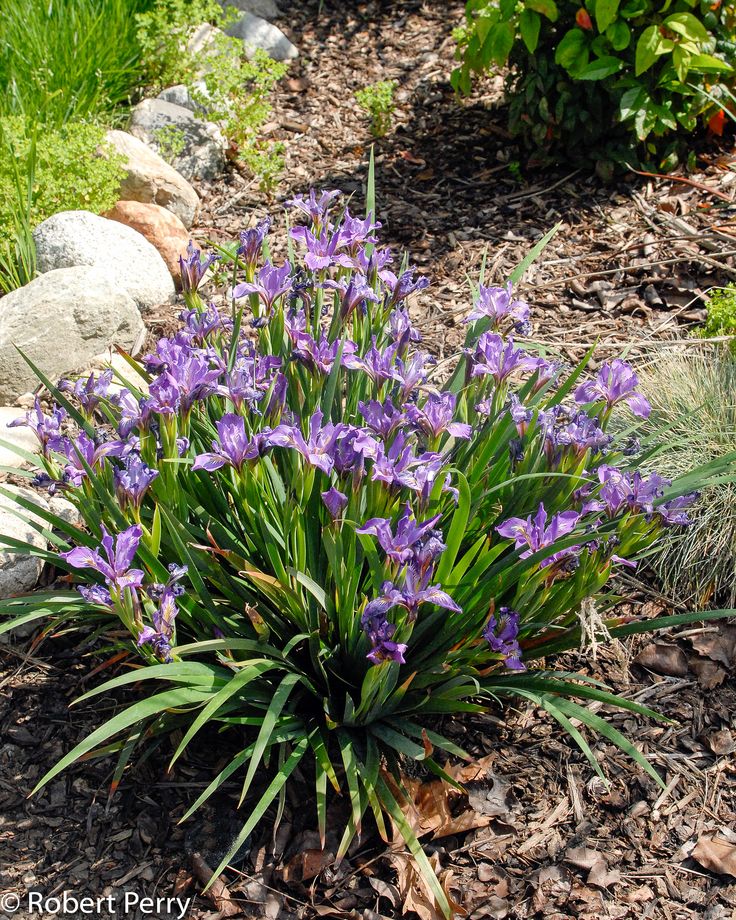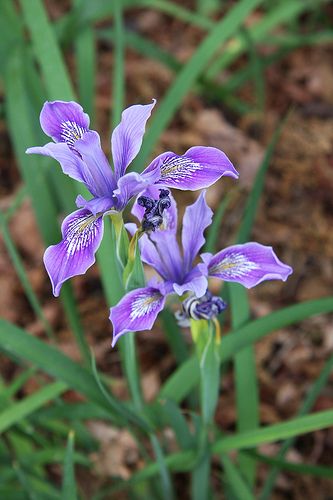Iris douglasiana

Iris douglasiana, commonly known as the Douglas Iris, is a captivating perennial herbaceous plant native to the coastal regions of western North America.
Celebrated for its elegant flowers and graceful foliage, the Douglas Iris adds a touch of beauty and charm to its natural habitats and cultivated landscapes alike.
In this comprehensive article, we will delve into the botanical intricacies, habitat preferences, life cycle, ecological and cultural importance, conservation status, and care guidelines for Iris douglasiana.
Botanical Description
The Douglas Iris belongs to the iris family (Iridaceae) and typically grows to heights of 1 to 2 feet. It features long, slender leaves that are sword-shaped and arise from rhizomatous stems.
The leaves are typically dark green and may have a bluish tint.
The most distinctive feature of the Douglas Iris is its flowers, which bloom in late winter to early spring.
The flowers are large and showy, with three drooping petals (falls) that are typically violet-blue, although color variations including purple, lavender, and white are also found.
The sepals (standards) are upright and often paler in color than the falls. Each flower arises from a slender stem and lasts for several days before fading.
Habitat and Distribution
The Douglas Iris is primarily found in coastal habitats, including coastal bluffs, meadows, and woodland edges, from central California to southwestern Oregon.
It thrives in moist, well-drained soils with ample sunlight or partial shade. The plant is often found growing in association with other coastal species such as grasses, sedges, and wildflowers.
Its ability to tolerate salt spray and seasonal flooding makes it well-suited to coastal environments, where it adds color and beauty to the landscape.
Life Cycle and Phenology
As a perennial plant, the Douglas Iris exhibits a relatively long life cycle compared to annuals. Growth typically begins in late fall to early winter, with new leaves emerging from rhizomes and expanding throughout the rainy season.
Flowering occurs in late winter to early spring, with individual flowers blooming successively along the stems.
After flowering, seed capsules develop and eventually split open to release numerous small seeds.
The plant may go dormant in summer, especially in regions with dry summers, re-emerging with the onset of cooler temperatures and autumn rains.
Ecological and Cultural Importance
The Douglas Iris plays a significant ecological role in its native habitat, providing food and habitat for a variety of wildlife species.
The flowers attract bees, butterflies, and hummingbirds, which pollinate the flowers and facilitate seed production.
Additionally, the dense foliage provides cover and nesting sites for birds and small mammals.
Culturally, the Douglas Iris has been admired for its beauty and has inspired artists, poets, and gardeners alike.
Its graceful flowers and elegant foliage make it a popular choice for gardens, native plant landscapes, and naturalistic settings.

Caring for Iris douglasiana
Sunlight
Plant Douglas Iris in a location that receives full sunlight to partial shade, as it thrives in bright, dappled light conditions.
Watering
Provide regular watering during the plant's active growing season, especially during dry spells.
However, be cautious not to overwater, as the plant prefers well-drained soil and may rot in waterlogged conditions.
Soil
Plant in moist, well-drained soil with a slightly acidic to neutral pH.
Amending the soil with organic matter such as compost can help improve drainage and fertility.
Mulching
Apply a layer of organic mulch around the base of the plant to help retain moisture, suppress weeds, and regulate soil temperature.
Avoid covering the rhizomes with mulch to prevent rot and fungal diseases.
Pruning
Remove spent flower stalks after blooming to encourage continued flowering and prevent self-seeding.
Trim back any dead or yellowing foliage as needed to maintain plant health and appearance.
Dividing
Every few years, consider dividing overcrowded clumps of Douglas Iris to rejuvenate the plants and promote better flowering.
Dig up the rhizomes in late summer or early fall, and replant the divisions in well-prepared soil.
By following these care guidelines, you can cultivate healthy and vibrant Douglas Iris plants in your garden or landscape, contributing to the conservation of native plant species and the beauty of coastal ecosystems.
Whether grown for its ecological benefits, cultural significance, or ornamental value, the Douglas Iris is sure to enchant with its elegant flowers and enduring grace.
Leave a Reply
You must be logged in to post a comment.